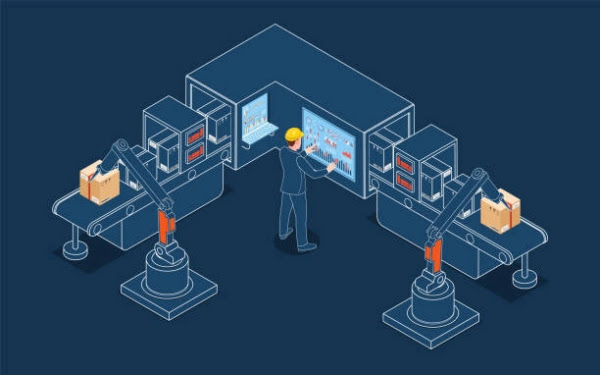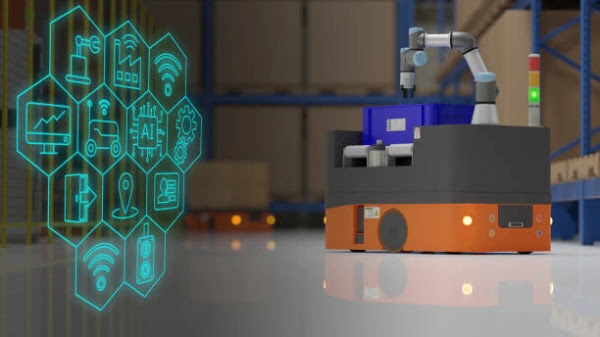Featured
- Get link
- X
- Other Apps
Smart Manufacturing
Industry 4.0 and Digital Twins
Introduction
Smart manufacturing, often referred to as Industry 4.0,
represents a paradigm shift in the manufacturing industry, driven by
advancements in digital technologies and automation. At the heart of this
transformation is the concept of digital twins, which are virtual
representations of physical assets, processes, and systems. By harnessing the
power of digital twins, manufacturers can optimize operations, improve
efficiency, and enhance decision-making in real-time. This article explores the
principles of Industry 4.0, the role of digital twins in smart manufacturing,
and their potential to revolutionize the way products are designed, produced,
and serviced.
- Industry 4.0: The Fourth Industrial
Revolution:
Industry 4.0 builds upon previous industrial revolutions and
leverages digital technologies to create smart, interconnected manufacturing
ecosystems. At its core, Industry 4.0 is characterized by the convergence of
physical and digital systems, enabled by technologies such as the Internet of
Things (IoT), artificial intelligence (AI), big data analytics, and cloud
computing. These technologies enable machines, devices, and systems to
communicate, collaborate, and autonomously make decisions, leading to increased
efficiency, flexibility, and productivity in manufacturing operations.
Key principles of Industry 4.0 include:
- Interoperability: The ability of
different devices, machines, and systems to seamlessly exchange data and
information.
- Connectivity: The integration of
physical and digital systems through networks and communication
technologies, such as IoT sensors and wireless networks.
- Data-driven decision-making: The
use of big data analytics and AI algorithms to analyze vast amounts of
data and derive actionable insights for optimizing processes and
performance.
- Automation and autonomy: The
deployment of robotics, autonomous systems, and AI-driven algorithms to
automate repetitive tasks, improve efficiency, and reduce human
intervention.
- Customization and flexibility: The
ability to rapidly adapt manufacturing processes and products to changing
customer demands and market conditions, enabled by agile production
systems and digital technologies.
- Digital Twins: Virtual Replicas of
Physical Assets:
At the heart of Industry 4.0 is the concept of digital
twins, which are virtual representations of physical assets, processes, or
systems. Digital twins capture real-time data from sensors, machines, and other
sources, allowing manufacturers to monitor, simulate, and optimize performance
in a virtual environment. By creating a digital twin of a physical asset,
manufacturers can gain insights into its behavior, performance, and condition,
enabling predictive maintenance, performance optimization, and process
improvement.
Digital twins consist of three main components:
- Physical asset: The physical
object or system being represented, such as a machine, equipment, or
production line.
- Virtual model: The digital
representation of the physical asset, created using CAD (Computer-Aided
Design) software, simulation tools, and IoT data.
- Real-time data integration: The
continuous integration of data from sensors, IoT devices, and other
sources to update the virtual model and synchronize it with the physical
asset.
Digital twins can be applied across various stages of the
manufacturing lifecycle, including design, production, operation, and
maintenance. For example, during the design phase, engineers can use digital
twins to simulate and optimize product designs, identify potential issues, and
validate performance before physical prototypes are built. In the production
phase, digital twins can be used to monitor and optimize manufacturing processes,
improve quality control, and minimize downtime by predicting and preventing
equipment failures.
- Applications of Digital Twins in Smart
Manufacturing:
Digital twins have numerous applications in smart
manufacturing across various industries and sectors. Some key applications
include:
- Predictive
maintenance: By monitoring real-time data from sensors and equipment,
digital twins can predict when components or systems are likely to fail
and schedule maintenance activities proactively. This helps minimize downtime,
reduce maintenance costs, and extend the lifespan of assets.
- Performance
optimization: Digital twins enable manufacturers to simulate different
operating scenarios, test process changes, and identify opportunities for
improving efficiency, productivity, and quality. By analyzing data and
optimizing parameters in a virtual environment, manufacturers can
fine-tune production processes and maximize performance.
- Remote
monitoring and control: Digital twins allow manufacturers to monitor and
control manufacturing operations remotely, regardless of location. This
enables real-time visibility into production processes, facilitates remote
troubleshooting and diagnostics, and enables agile decision-making to
respond to changing conditions or disruptions.
- Product
lifecycle management: Digital twins provide a holistic view of a product's
lifecycle, from design and development to production and service. By
capturing data throughout the product lifecycle, manufacturers can improve
product quality, optimize maintenance schedules, and enhance customer
satisfaction by delivering more reliable and durable products.
- Benefits and Challenges of Digital
Twins in Smart Manufacturing:
Digital twins offer numerous benefits for manufacturers, including:
- Improved
operational efficiency: By providing real-time insights into performance
and processes, digital twins enable manufacturers to optimize operations,
reduce waste, and improve productivity.
- Enhanced
decision-making: Digital twins enable manufacturers to make data-driven
decisions based on real-time data and simulations, leading to better
outcomes and faster response times.
- Predictive
maintenance: By predicting equipment failures and scheduling maintenance
proactively, digital twins help minimize downtime, reduce maintenance
costs, and extend asset lifespan.
- Accelerated
innovation: Digital twins facilitate rapid prototyping, testing, and
validation of new products and processes, enabling manufacturers to bring
innovations to market faster and more cost-effectively.
However, implementing digital twins in smart manufacturing also poses
several challenges, including:
- Data
integration and interoperability: Integrating data from disparate sources
and systems can be complex and challenging, requiring standardized
formats, protocols, and interfaces to ensure interoperability.
- Security
and privacy: Digital twins rely on the continuous exchange of data between
physical assets and virtual models, raising concerns about data security,
privacy, and protection against cyber threats.
- Scalability
and complexity: Managing and maintaining digital twins for large-scale
manufacturing operations can be complex and resource-intensive, requiring
robust infrastructure, computational resources, and expertise.
- Cultural
and organizational barriers: Adopting digital twins requires cultural and
organizational changes to embrace data-driven decision-making,
collaboration, and innovation across departments and functions.
Conclusion:
Digital twins are transforming the manufacturing industry by
enabling real-time monitoring, simulation, and optimization of physical assets
and processes. By creating virtual replicas of physical assets, manufacturers
can gain insights into performance, predict maintenance needs, and optimize
operations to improve efficiency, productivity, and quality. While digital
twins offer significant benefits for smart manufacturing, they also pose
challenges related to data integration, security, scalability, and
organizational readiness. By addressing these challenges and harnessing the
power of digital twins, manufacturers can unlock new opportunities for
innovation, competitiveness, and sustainability in the era of Industry 4.0.
- Get link
- X
- Other Apps


